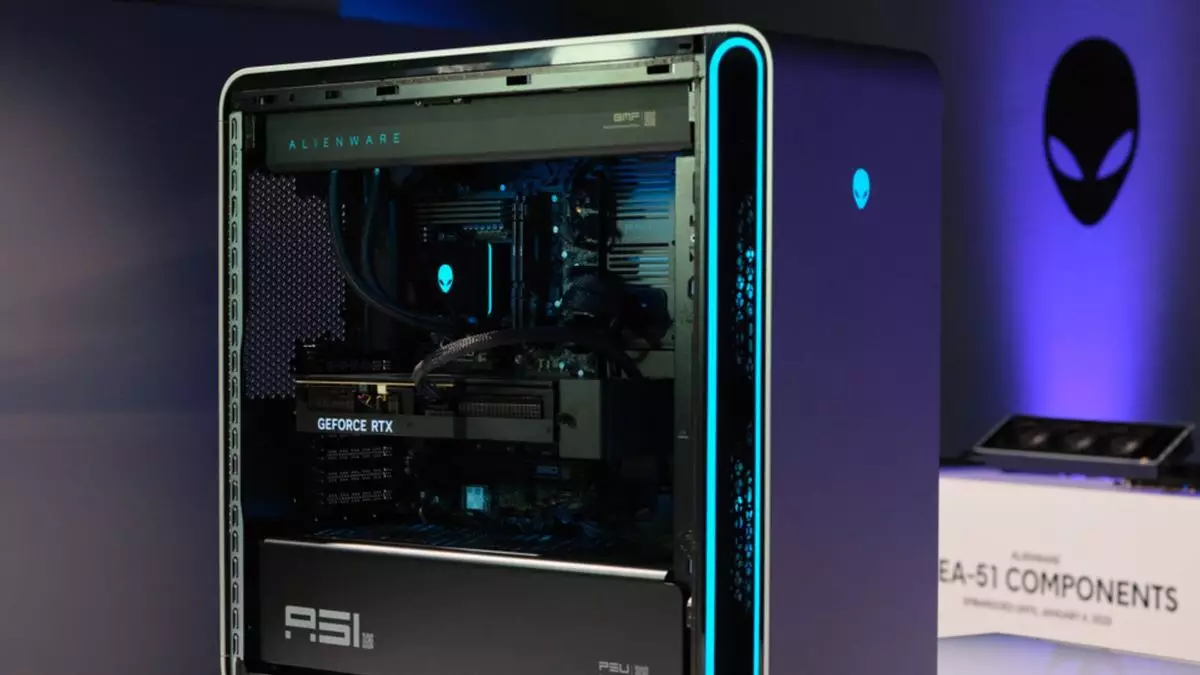Alienware has long been a name associated with high-performance gaming desktops, often revered for their sleek designs and robust specifications. However, the brand has been equally criticized for its restrictive upgrade paths that have left many enthusiasts craving more flexibility. As we observe the gaming landscape evolve with each new release, Alienware’s recent unveiling at CES suggests they may be attempting to shift this paradigm. Despite their efforts, a closer examination reveals that the gaming juggernaut still maintains certain limitations that could deter potential buyers.
The Area-51 Desktop: A Brave New World?
This year’s CES highlighted the Area-51 desktop, touted as a fully upgradeable gaming rig. The anticipation built around this announcement sparks a glimmer of hope for gamers seeking a future-proof system. Yet, underneath the glitz lies a caveat: the introduction of a $35 conversion kit. This kit, which includes critical cables for motherboard compatibility, feels less like a pioneering solution and more like a hidden cost that diminishes the allure of upgradeability.
The components offered in this kit—a power switch cable, a fan power bridge wiring cable, and a USB dongle extension—are essential for connecting third-party motherboards and utilizing the features unique to the Area-51 chassis, such as AlienFX lighting and fan controls. The need for additional purchases to fully utilize a product that the brand markets as “upgradeable” creates a frustrating disconnect for consumers hoping for simplicity and convenience.
Performance vs. Upgradeability: A Double-Edged Sword
Despite its shortcomings, the new Area-51 desktop promises impressive performance with optimized thermal properties. Alienware boasts that these systems, equipped with the latest RTX 50 series graphics cards, operate with enhanced cooling mechanisms, running up to 13% cooler and 45% quieter than previous models. This is certainly an enticing proposition for gamers prioritizing performance and acoustics.
Nonetheless, the effectiveness of these enhancements is arguably overshadowed by the motherboard restrictions. If a user opts for a motherboard other than the ATX12VO model, they will also be required to purchase a new power supply. This requirement questions the very premise of upgradeability—shouldn’t it provide consumers with ease of modification rather than concern over additional expenses?
The Discrepancy in Upgrade Options
While the graphics card, RAM, and SSD upgrades appear to remain relatively unrestricted, they don’t lessen the apprehensions regarding the motherboard constraints. This bifurcation sends mixed messages. How can a system be marketed for its modular capabilities when one major component, the motherboard, remains largely dependent on proprietary adaptations? The inclusion of easily scannable QR codes to guide users through upgrades demonstrates a commitment to user experience, but the core issue of upgrade accessibility still looms large over the Alienware narrative.
Alienware’s recent approach feels somewhat contradictory—the robust performance features and sleek aesthetics sit in juxtaposition to a system that still mandates costly additional accessories for basic functionality improvements. While these strides represent progress, the sentiment echoes the age-old struggle between premium branding and consumer expectations.
A Mixed Bag for Alienware Enthusiasts
Alienware’s foray into providing greater upgrade paths is commendable but daunting. The incorporation of upgradable components signifies evolution, yet the additional costs associated with achieving true modularity may prevent enthusiasts from embracing their systems fully. For every leap forward, there seems to be a step back, leaving consumers pondering the true value of their investment.
As gamers increasingly seek systems that cater to their personalized demands, Alienware must not only adapt to this trend but also ensure that the offerings match the expectations set forth by their innovative branding. Without substantial changes to their upgrade framework, they risk alienating a segment of gamers hungry for genuine modularity in their high-performance rigs. The journey towards complete flexibility is underway, but the path remains convoluted, requiring mindful navigation for both the brand and its patrons.


Leave a Reply